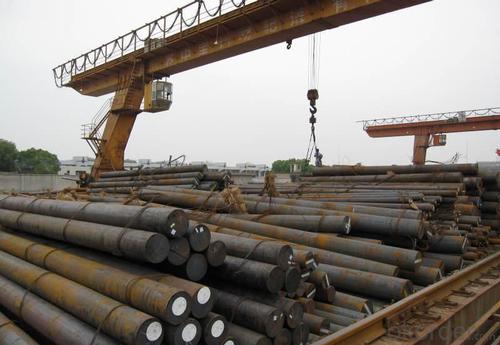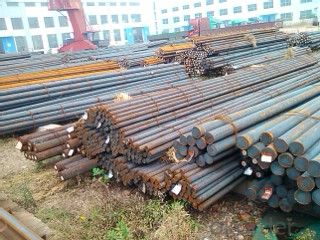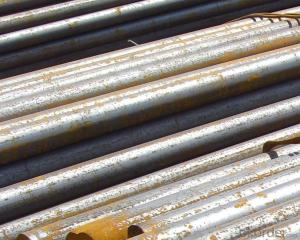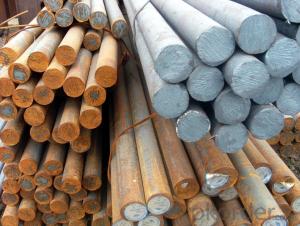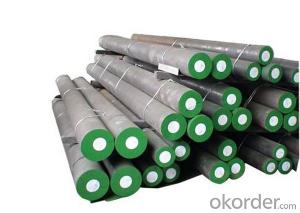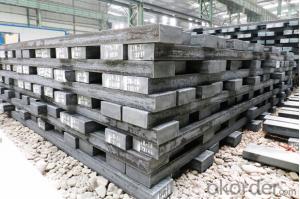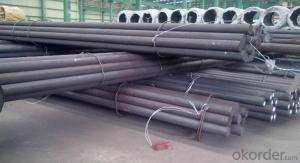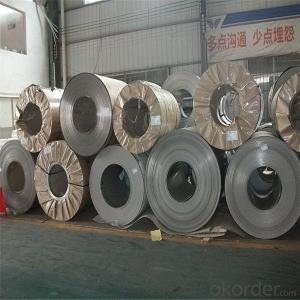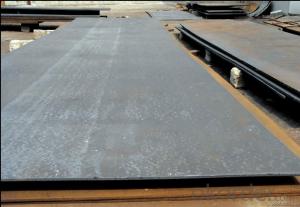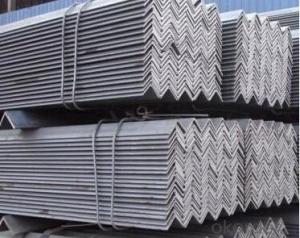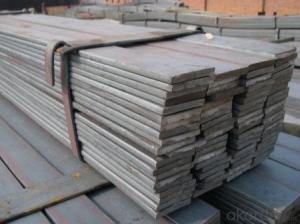Mild Steel SS400 Q235 Steel A36 Carbon Steel
- Loading Port:
- China main port
- Payment Terms:
- TT OR LC
- Min Order Qty:
- 30 m.t.
- Supply Capability:
- 10000 m.t./month
OKorder Service Pledge
OKorder Financial Service
You Might Also Like
Specification
Mild Steel SS400 Q235 Steel A36 Carbon Steel
Product Information:
Section shape:Round,square,hexagonal,flat,angle
Surface:Black painted,galvanized
Specifications:Round bar
Diameter: 4mm~800mm
Square bar
Size: 4mm*4mm~100mm*100mm
Length:5.8m,6m,11.8m,12m or as required.
Package:Bundled,wooden box for export standard package.
Application:Carbon steel rod applies to chemical industry, shipping industry,
manufacturing industry,construction,decorate Industry,electric
power,pump shafts, sanitary wares,furniture handles,boiler,high
temperature resistant,low temperature resistant, corrosion resistant.
Product Overviews:
| Product Name | Typical Grades | Diameter(mm) | Standard adopted |
| Carbon Steel | 20 (1020/S20C/C22) | Ø16-Ø300 | GB/SAE/JIS/DIN |
| 40 (1040/S40C/C40) | |||
| 45 (1045/S45C/C45) | |||
| Bearing Steel | GCr9 (51100/SUJ1) | Ø12-Ø250 | |
| GCr15 (52100/SUJ2/100Gr6) | |||
| GCr9SiMn (A485-Gr.1/SUJ3) | |||
| Cr-Mo Steel | 20Cr (5120/SCr420H/20Cr4) | Ø12-Ø250 | |
| 40Cr (5140/SCr440/41Cr4) | |||
| 42CrMo(4140/SCM440/42CrMo4) | |||
| Gear Steel | 20CrNiMo | Ø16-Ø600 | |
| 20CrMn(5115/SMnC420/20MnCr5) | |||
| 20CrNiMo(8620/SNCM220/20CrMiMo2) |
Product Show:
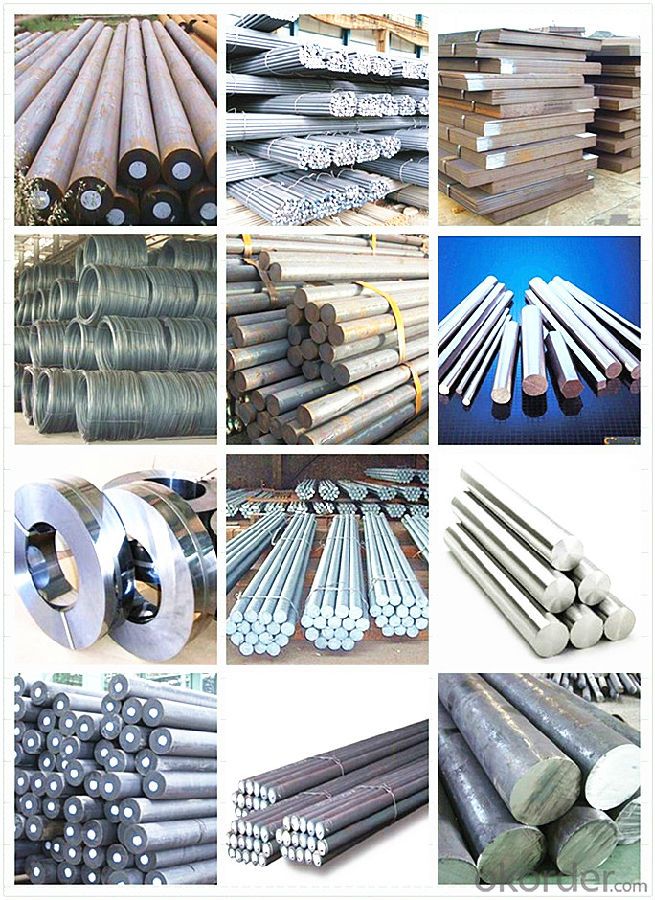
Our Advantages:
· Industry experience over 20 years.
· Shipment of goods -More than 70 countries worldwide.
· The most convenient transport and prompt delivery.
· Competitive price with best service.
· High technical production line with top quality products.
· High reputation based on best quality products.
With our experienced, enthusiastic and dynamic staffs, we assure to bring you the products with best quality, reasonable prices and good after-sales services under the motto: Friends First, Business After.
Communication, Experience, Expertise and Best efforts are our Promises to you.
- Q: What are the different pharmaceutical grades of special steel?
- There are several different pharmaceutical grades of special steel, including 316L, 904L, and 2205. These grades are chosen for their high corrosion resistance, excellent mechanical properties, and their ability to withstand harsh environments in pharmaceutical manufacturing processes.
- Q: What are the different machining methods for special steel?
- There are several machining methods for special steel, including turning, milling, drilling, grinding, and EDM (Electrical Discharge Machining). Each method has its own advantages and is selected based on factors such as the complexity of the part, required precision, surface finish, and material hardness.
- Q: How does special steel perform in abrasive environments?
- Special steel performs exceptionally well in abrasive environments due to its high hardness, superior resistance to wear and tear, and excellent corrosion resistance. It is specifically designed to withstand the harsh conditions of abrasive environments, such as those with sand, gravel, or other abrasive particles. The unique composition and properties of special steel enable it to maintain its integrity and durability even when exposed to extreme abrasion, making it an ideal choice for applications in industries like mining, construction, and manufacturing.
- Q: How is bearing steel used in the manufacturing of bearings?
- Bearing steel is used in the manufacturing of bearings due to its high strength and durability. It provides the necessary hardness and wear resistance required to withstand the heavy loads and continuous motion associated with bearing applications. The steel is typically heat-treated and processed to enhance its mechanical properties, such as improved fatigue life and corrosion resistance. This ensures that the bearings can operate efficiently and reliably in various industrial and automotive applications.
- Q: How does special steel perform in extreme cold temperatures?
- Special steel is custom-made to excel under frigid conditions, with alloys that possess a high level of low temperature ductility. This quality enables the steel to maintain its structural integrity even in the harshest cold settings, making it a popular choice in Arctic exploration, oil and gas operations in cold regions, and the aerospace industry. A key distinguishing feature of special steel is its resistance to brittleness when exposed to low temperatures. Unlike regular steel, which becomes brittle and susceptible to cracking in extreme cold, special steel retains its toughness, rendering it suitable for sub-zero conditions. This remarkable attribute is achieved through meticulous selection and control of the alloy's composition, allowing for a superior balance between strength and ductility. Moreover, special steel boasts exceptional resistance to corrosion, a particularly crucial trait in cold environments where exposure to snow, ice, and moisture is prevalent. The alloying elements present in special steel, such as chromium and nickel, generate a protective oxide layer on the surface, successfully preventing corrosion and preserving the steel's structural integrity. Additionally, special steel exhibits remarkable thermal conductivity, enabling efficient heat transfer even in extremely cold temperatures. This thermal property is of paramount importance in applications where effective heat management is essential, such as in the aerospace industry or in equipment operating in cold climates. In summary, special steel is meticulously engineered to excel in extreme cold temperatures. Its low temperature ductility, resistance to brittleness, corrosion resistance, and thermal conductivity establish it as a dependable and enduring material for diverse applications in cold environments.
- Q: How does special steel compare to other materials like aluminum or titanium?
- Special steel, such as stainless steel or tool steel, offers unique properties that make it highly desirable for certain applications. Compared to materials like aluminum or titanium, special steel is generally stronger, more durable, and has better resistance to corrosion. It also often provides better heat resistance and can be easily machined or welded. However, aluminum and titanium have their own advantages such as being lighter in weight and having higher strength-to-weight ratios. The choice of material depends on the specific requirements of the application.
- Q: What are the requirements for special steel used in food processing equipment?
- Ensuring the safety and hygiene of food during processing relies heavily on the crucial requirements for special steel used in food processing equipment. The following are key considerations: 1. Corrosion resistance: The steel utilized in food processing equipment must possess exceptional resistance against corrosion. It should withstand exposure to various food products, cleaning agents, and environmental conditions without degradation or food contamination. 2. Hygienic properties: To facilitate easy cleaning and prevent the growth of harmful microorganisms, the steel should have a smooth surface finish, devoid of cracks, pits, or crevices where bacteria or food particles can accumulate. 3. Non-reactivity: The steel employed in food processing equipment must not react with the food or modify its taste, color, or odor. It should be chemically inert, releasing no substances that could compromise the food's quality or cause contamination. 4. High temperature resistance: Food processing often involves high-temperature operations like cooking, sterilization, or pasteurization. Therefore, the special steel used in such equipment must endure these extreme temperatures without compromising its structural integrity or releasing harmful substances. 5. Mechanical strength: The steel must possess adequate mechanical strength to endure the operational stresses of the processing equipment, such as pressure, vibration, or impact. This ensures durability and prevents any failures or breakages during operation. 6. Compliance with regulations: The special steel utilized in food processing equipment must meet specific regulatory standards and certifications pertaining to food safety and hygiene, such as those set by the FDA (Food and Drug Administration) or NSF (National Sanitation Foundation). Complying with these regulations guarantees the equipment's suitability for use in the food industry. In summary, the requirements for special steel used in food processing equipment focus on ensuring the equipment's durability, cleanliness, and safety while upholding the quality and integrity of the processed food.
- Q: What are the different methods of surface anodizing for special steel?
- Surface anodizing for special steel can be achieved through various methods, each with its own advantages and applications. Below are some of the different techniques available: 1. Chromic Acid Anodizing: By immersing the steel in a chromic acid solution, a thin, hard, and corrosion-resistant oxide layer forms on its surface. This method is particularly effective for enhancing durability and aesthetic appeal, as it enables excellent adhesion for paint and other coatings. 2. Sulfuric Acid Anodizing: Widely utilized, this method involves immersing the steel in a sulfuric acid bath and applying a direct current to create an oxide layer on the surface. It offers exceptional corrosion resistance, increased hardness, and improved wear resistance. Additionally, it provides a solid foundation for achieving various colors and finishes by applying dyes or sealing. 3. Phosphoric Acid Anodizing: Primarily used for stainless steel, phosphoric acid anodizing entails immersing the steel in a phosphoric acid solution and applying a direct current. This process generates a protective oxide layer that enhances corrosion resistance and yields a uniform matte finish. Phosphoric acid anodizing is commonly employed in applications where aesthetics are not a priority. 4. Titanium Anodizing: This method involves anodizing steel using titanium electrodes, resulting in a thick oxide layer on the surface. The outcome is improved corrosion resistance, increased hardness, and enhanced wear resistance. Titanium anodizing finds significant usage in industries like aerospace, where robust and durable surface properties are vital. 5. Hard Anodizing: Distinguished by its specialized nature, hard anodizing produces a thick and highly durable oxide layer on the steel surface. It achieves this by employing higher voltage and lower temperature during the anodizing process. Consequently, it enhances hardness, wear resistance, and electrical insulation properties. Hard anodizing is particularly valuable for applications requiring superior abrasion resistance, such as parts exposed to heavy wear or friction. These are merely a few examples of the various methods available for surface anodizing of special steel. The selection of the most suitable technique depends on specific application requirements, desired properties, and the type of steel being treated. It is crucial to consult with industry experts to determine the optimal anodizing method for a particular steel application.
- Q: How does hot rolling affect the microstructure of special steel?
- Hot rolling, a metalworking process, involves heating steel above its recrystallization temperature and passing it through rollers to reduce thickness. This process significantly affects the microstructure of special steel. When steel is hot rolled, the high temperature prompts the grains to recrystallize, eliminating defects and creating a more uniform and refined grain structure. This leads to smaller, equiaxed grains, which enhance the steel's mechanical properties. Furthermore, hot rolling encourages the formation of microstructural features like dislocation cells and subgrains. These features increase the steel's strength and toughness, making it suitable for applications requiring high performance and durability. Moreover, hot rolling can cause certain alloying elements to precipitate within the steel. These precipitates play a crucial role in enhancing specific properties such as corrosion resistance or high-temperature strength. Overall, hot rolling profoundly impacts the microstructure of special steel. It refines the grain structure, promotes beneficial microstructural features, and facilitates the precipitation of alloying elements. These changes contribute to improved mechanical properties and performance, making hot rolled steel a preferred choice in industries like automotive, aerospace, and construction.
- Q: How is tool steel different from other types of special steel?
- Tool steel is a specific type of special steel that is designed to have exceptional hardness, strength, and durability, making it ideal for applications involving cutting, shaping, and forming materials. Unlike other types of special steel, tool steel undergoes a unique heat treatment process that enhances its properties, such as wear resistance and toughness, enabling it to withstand high temperatures and repeated use without losing its edge or integrity. Additionally, tool steel often contains alloying elements like chromium, vanadium, and tungsten, which further contribute to its exceptional performance and ability to retain sharpness.
Send your message to us
Mild Steel SS400 Q235 Steel A36 Carbon Steel
- Loading Port:
- China main port
- Payment Terms:
- TT OR LC
- Min Order Qty:
- 30 m.t.
- Supply Capability:
- 10000 m.t./month
OKorder Service Pledge
OKorder Financial Service
Similar products
Hot products
Hot Searches
Related keywords



